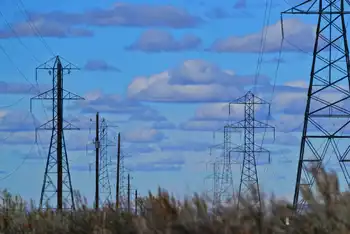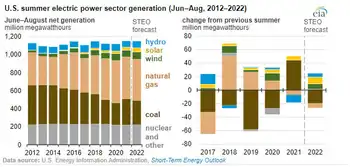California Regulators Question Grid Upgrade
SAN FRANCISCO -- - A project to unclog a big bottleneck on the California power grid -- a contributor to blackouts in 2000 to 2001 -- has been thrown into question by a judge at the California Public Utilities Commission.
CPUC Judge Meg Gottstein, in a draft order, ruled utility Pacific Gas & Electric Co. cannot go ahead with the $323 million job to expand the "Path 15" transmission corridor because it will not provide utility customers enough savings to offset the project's cost.
A separate draft order by CPUC Commissioner Loretta Lynch, however, would give Path 15 the green light.
The five-member CPUC will not take up the two draft orders until at least April 17.
Lynch said the Central Valley project, which aims to add more capacity to the high-voltage lines that carry power between southern and northern California, provides economic benefits by acting as an "expensive" insurance policy against "market gaming abuses" like those in 2000 to 2001.
California has charged that energy traders manipulated the wholesale electricity market to rig prices at 10 times normal levels during the state's energy crisis.
Two top energy traders for bankrupt Enron Corp. have pleaded guilty in San Francisco Federal Court to conspiracy charges that they "gamed" energy prices and are cooperating with an ongoing federal investigation into manipulation of the California market.
Since the height of California's energy crisis, federal price caps have pushed down electricity prices and more power plants have come on line, easing the need to send megawatts long distances across the state grid and making Path 15 less essential to maintaining reliability of the grid.
COST-BENEFIT MISMATCH
In her decision, Gottstein said she reviewed an economic analysis of the project by the Independent System Operator, California's grid manager, and found that the cost of upgrading Path 15 "would not even catch up with estimated benefits within a 10-year period, except under implausible scenarios."
Lynch, however, said the Path 15 project is valuable to customers by reducing potential market abuses and signaling to "market players that California will take all actions necessary to prevent a repeat of the blackouts and horrific prices increases that occurred in 2000 and 2001 due to market manipulation."
Gregg Fishman, a spokesman for the ISO, said the grid operator "definitely sees a need for Path 15" and believes the project is cost effective.
Pacific Gas & Electric, a unit of San Francisco-based PG&E Corp., will "look for clarification from the commission and work with the commission to understand the direction they intend," said spokesman Jon Tremayne.
The utility, which filed for bankruptcy protection in April 2001 after running up huge debts buying power for its customers, would work on Path 15 with the Western Area Power Administration, a federal agency, and Trans-Elect Inc., a private transmission company.
The project would add about 1,500 megawatts to the 3,950 megawatts of capacity on the 83-mile (134-km) corridor. One megawatt is power for about 1,000 homes.
Related News

BLM Announces Completion of Crimson Energy Storage Project
LOS ANGELES - The Bureau of Land Management announced that construction of the Crimson Energy Storage Project, a 350-megawatt battery storage system in eastern Riverside County, is now complete, and the system is in operation and expanding grid capacity. The battery storage project will provide 1400 megawatt-hours of electricity at full capacity and is a significant milestone in the Biden-Harris administration’s efforts to modernize America’s power infrastructure in the West and achieve a goal of 100 percent carbon-free electricity by 2035.
“The BLM is proud to support responsible development of renewable energy projects as part of our mission to sustainably manage…




